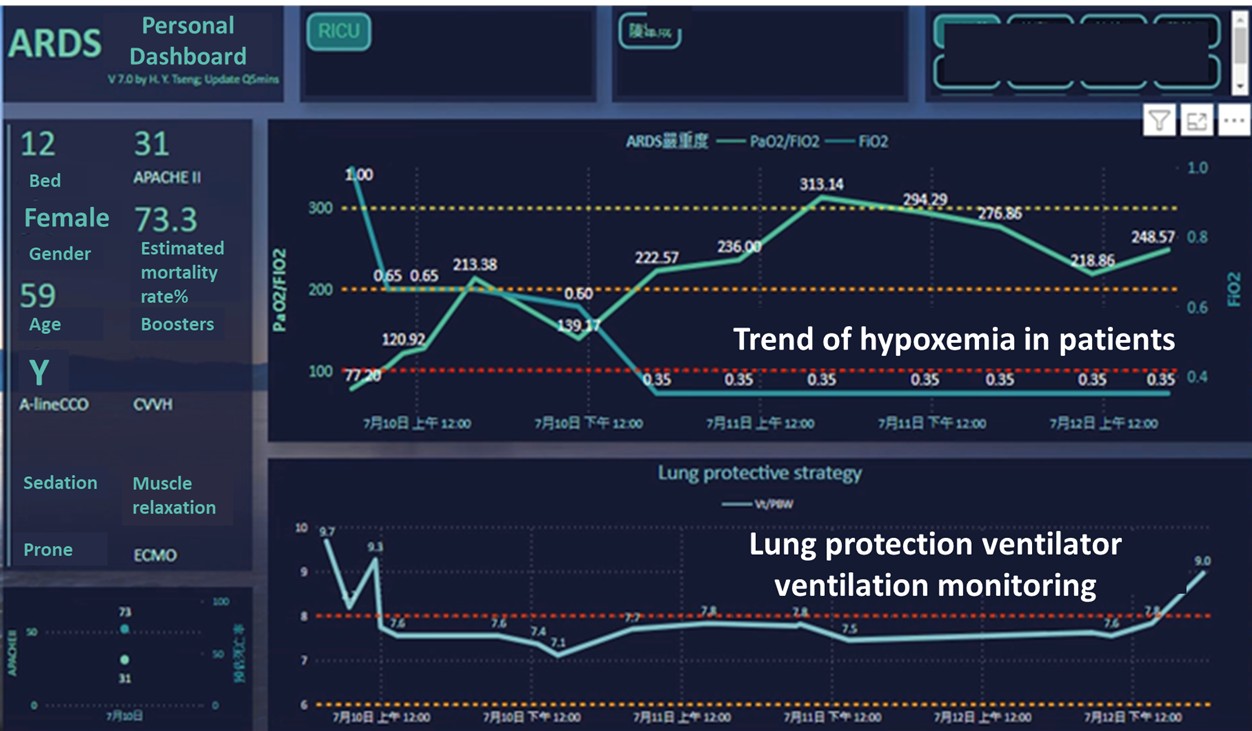Acute Respiratory Distress Syndrome (ARDS) is one of the most challenging diseases in critical care medicine, with a mortality rate as high as 40-70%. The rapid and unpredictable disease progression, dispersed clinical information, long-term hospitalization requirements, and enormous medical resource consumption make it particularly difficult to manage. To improve ARDS care, our hospital's Thoracic Clinical Team, Artificial Intelligence Center, Digital Transformation Office, and Information Department jointly created "ARDiTeX: Multimodal Assisted Diagnostic System" to help with early detection, monitor the implementation of lung-protective ventilation, improve care quality, and reduce resource expenditure.
.jpg)
▲ ARDiTeX Operational Flow Chart
This system integrates medical data and presents analysis results through visualization dashboards, mainly comprising two major functions:
- "ARDS Intelligent Detection System": Assesses risk through deep learning of X-ray images and oxygenation function indicators. When the probability of bilateral lung infiltration exceeds 50% and the P/F ratio is less than 300, the system automatically sends risk messages and activates lung-protective ventilation measures.
- "ARDS Lung Protection Monitoring System": Presents real-time trends in patient oxygenation and lung protection status, helping the medical team adjust optimal treatment.
.jpg)
▲ AI real-time detection of ARDS, combining oxygen and ventilator information to actively notify frontline medical staff to initiate interdisciplinary care.

▲ ARDS visualization dashboard for monitoring treatment status.
The system integrates physiological data, hemodynamics, blood test values, arterial blood gases, and ventilator parameters to enhance diagnostic accuracy and predict disease trends, enabling personalized treatment. In high-risk situations, it automatically sends clinical information and X-ray images to alert physicians.
.jpg)
▲ Medical Internet of Things ARDS AI Early Warning Illustration
Since February 2021, the system has been used in our hospital's respiratory intensive care unit, screening 2,400 critically ill patients and monitoring 442 ARDS patients. The implementation rate of lung-protective ventilation within 24 hours after intervention increased by 30%, and the intensive care unit mortality rate decreased by 20%.
.jpg)
▲ Significant reduction in ICU mortality through ARDiTeX system
Journal Article
Awards
2024
- Storm Media AI Medical Navigation Award
2023
2022
- Taiwan-Japan Joint Critical Care Symposium New Researcher Award
- Taiwan-Japan Joint Critical Care Symposium Best Oral Presentation
2021
- Taiwan Critical Care Medical Quality Award
- NHQA National Healthcare Quality Award – Smart Healthcare Category
Contact window
Project Management Group +886-4-22052121 ext. 12534
.jpg)

.jpg)
.jpg)

.jpg)